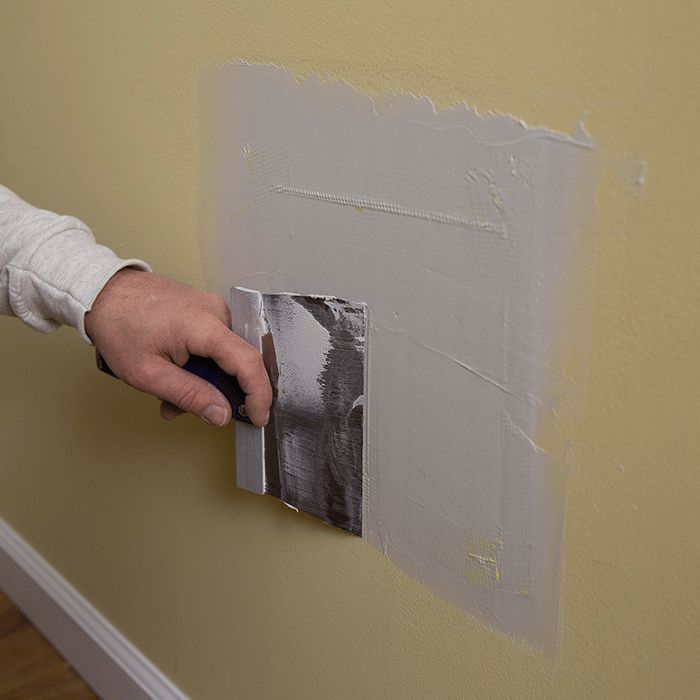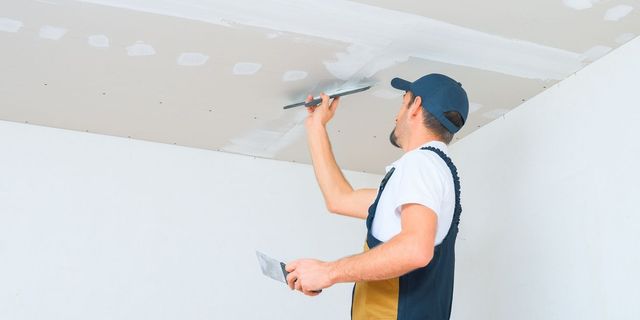A Comprehensive Guide to Learning Drywall Repair and Installation
This guide supplies a comprehensive expedition of drywall repair and installation, dealing with both novices and skilled experts. It outlines important devices, methods for patching and hanging sheets, and the vital ending up processes. drywall contractors. By understanding typical pitfalls, people can attain polished results. Grasping these abilities not just improves one's home but additionally develops self-confidence in do it yourself endeavors. What foundational pointers will assure an effective project from beginning to complete?
Important Devices for Drywall Repair Work and Setup
When starting on drywall repair work and installation, a couple of crucial tools can substantially boost the performance and quality of the work. A drywall blade, usually readily available in numerous dimensions, is vital for using joint substance and smoothing seams. A taping knife is likewise necessary for feathering sides and ensuring a seamless finish. Furthermore, a drywall saw or energy knife permits for accurate cutting of drywall sheets to fit any type of area.

Step-by-Step Overview to Patching Holes
Covering holes in drywall is a straightforward process that can recover the wall surface's appearance and honesty. To begin, the location around the hole ought to be cleansed and any type of loose particles removed. For tiny holes, a straightforward spackle or joint substance can be applied with a putty blade. Larger holes may need a spot; a piece of drywall can be reduced to fit the hole, safeguarded with sticky or screws, and then taped around the edges. As soon as the spot remains in location, joint substance is applied over the spot and feathery bent on mix with the surrounding wall surface. After the substance dries out, fining sand is required to accomplish a smooth finish. The fixed area can be keyed and painted to match the rest of the wall. This technique guarantees a seamless repair, improving the total appearance of the drywall and keeping its architectural honesty.
Techniques for Hanging Drywall Sheets
After effectively repairing openings in drywall, the next action entails hanging new drywall sheets to develop a seamless surface. To attain this, one must start by measuring the wall area properly and cutting the drywall sheets to fit. It is important to hang the sheets flat for much better structural honesty, beginning with the top and functioning downwards.
Utilizing a drywall lift can streamline the procedure, specifically for ceiling setups. When placed, safeguarding the sheets with drywall screws at periods of regarding 12 inches along the sides and 16 inches in the field is essential. This guarantees a strong hold and decreases the risk of drooping. For edges, the sheets should be reduced to fit snugly, enabling cleaner seams. Lastly, it is suggested to surprise the joints between sheets to reinforce the total framework, creating a more resilient surface ready for the next phase in the drywall installation process.
Finishing Touches: Taping and Mudding
Completing the drywall installation involves the important steps of taping and mudding, which assure a smooth and sleek finish. Insulation calls for the application of joint tape over the joints in between drywall sheets. Interior Painting. This tape can be either paper or fiberglass harmonize, with each kind offering unique advantages. After taping, the following step is mudding, where joint substance, or "mud," is applied to cover the tape and fill any kind of flaws
Using a drywall knife, the substance ought to be spread out evenly, making sure a feathery edge to reduce visible changes. Several layers are usually essential, with fining sand in between each layer to achieve a smooth surface area. Cautious attention during this procedure is crucial, as it considerably impacts the final appearance of the wall. With the ideal technique and patience, the end result will certainly be a flawless structure ready for paint or ending up touches.
Common Blunders to Avoid in Drywall Projects

An additional common mistake is not allowing sufficient drying time between layers, which can trap dampness and compromise the finish. Additionally, neglecting to feather the sides properly can create visible lines and flaws. Skipping sanding or making use of inappropriate techniques may leave rough areas. By being conscious of these mistakes, people can significantly enhance the high quality of their drywall projects and achieve a professional-looking coating.
Frequently Asked Questions
Can I Repair Drywall Without Specialist Help?
Yes, one can repair drywall without expert aid. With the right devices, products, and advice, people can efficiently manage small repairs. Substantial damage may require specialist knowledge for ideal results and toughness.
Exactly How Long Does Drywall Compound Require To Dry?
Drywall compound generally takes in between 24 to 48 hours to dry totally, depending upon factors such as humidity and temperature level. Thinner layers may dry out faster, while thicker applications call for even more time for ideal outcomes.
What's the Best Kind of Paint for Drywall?
The finest type of paint for drywall is commonly a water-based latex paint. It gives superb protection, sturdiness, and simplicity of application, making it excellent for interior wall surfaces while allowing for simple cleaning with soap and water.

Exactly how Do I Protect Against Mold And Mildew on Drywall?
To stop mold and mildew on drywall, assurance appropriate air flow, control humidity levels, utilize mold-resistant products, and promptly address any type of leakages. Routine inspections and instant remediation of water damages are likewise necessary for long-lasting prevention.
Is Drywall Recyclable After Removal?
Drywall is recyclable after removal, gave it is devoid of contaminants like mold and mildew, paint, or other dangerous materials. Recycling centers can process it right into brand-new items, advertising sustainability and minimizing land fill waste in building.
When starting on drywall more info repair and installation, a few essential devices can greatly boost the efficiency and quality of the job. After efficiently fixing openings in drywall, the following action includes hanging new drywall sheets to develop a smooth surface area. Completing the drywall setup involves the important actions of mudding and taping, which assure a smooth and polished finish. Achieving a sleek surface in drywall tasks can be difficult, and several usual blunders can undermine the top quality of the job. Yes, one can fix drywall without professional assistance.